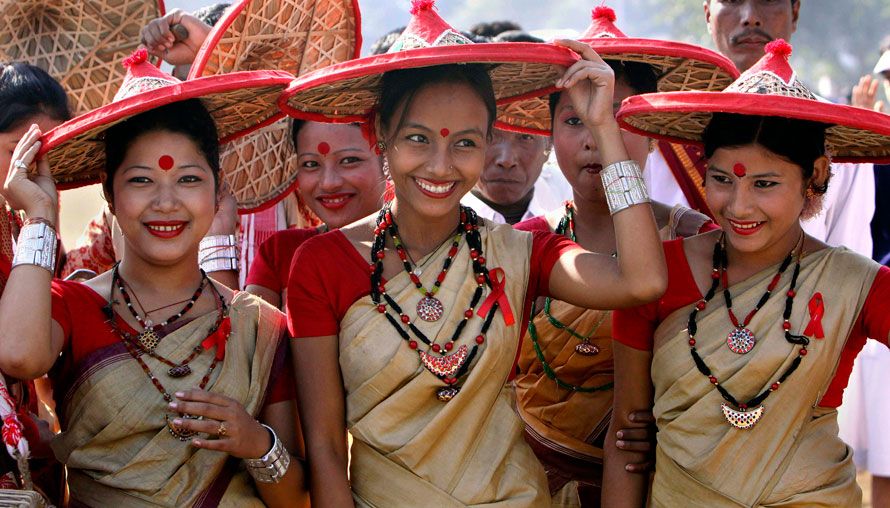The people of Manipur follow several faiths and religions which can be traced down to its unique historical past. Manipur preserved an ancient indigenous religion rich in mythology and colorful in ritual, known today as the Sanamahi. Sanamahi worshiped is concentrated around Sidaba Mapu, the one God. The Manipuri copper plates dates Saka year 721 issued by King Khomtekcha, ruler of Manipur from 763 AD to 773 AD, mention worship of Sanamahi. Early Manipuris were the devotees of a Supreme diety “Lainingthou Soralel” following the footprint of their Godly ancestors. That particular kind of ancestor worship and animism, with the central focus of worship on Umang Lai – that is, local governing deities worshiped in sacred groves.
Some of the local gods (Lais) they worship are Atiya Sidaba, Pakhangba, Sanamahi, Leimaren, Oknarel, Panganba, Thangjing, Marjing, Wangbaren, Koubru. The religious life of the people, even when they adopted mainstream Hinduism, retained many characteristics inherited from their prehistoric ancestors. The essentials of this religion remain recognizable to the present day. Hinduism has a long tradition in Manipur, however Vaisnavism penetrated Manipur during the reign of King Kyamba and King Khagemba in the 15th century. Towards the end of the 17th century and at the advent of the 18th century, a great force to Gaudiya Vaishnavism came and spread in Manipur. Over the last couple of decades there has been a revival of Sanamahi religion and this is evident in the significant growth of the ‘other’ religion category in the 2001 census. Around 10% of the population identified themselves under this category. Sanamahi religion is the original religion of the Meitei people living in Manipur.
Due to the changing demographic profile of the state, Sanamahi will now be included in the next Government of India population census in 2011. Other religions prevalent in the region are:
Christianity in the hill tracts of north-eastern region spread as a result of the British religious policy in the area. At present almost all of the hill tribal population in Christian. All groups of Nagas and Kukis of Manipur have adopted Christianity. The Bible is available in Tangkhul, Thadou, Lushai and Meitei dialects. Christianity is the second largest religion in the state accounting for 35% of the population.
Most of the Muslims in Manipur are descendants of Bengali immigrants and are commonly referred to as Pangans. Muslims form about 8% of the population.

www.tribaltoursinindia.com © All Rights Reserved, 2021